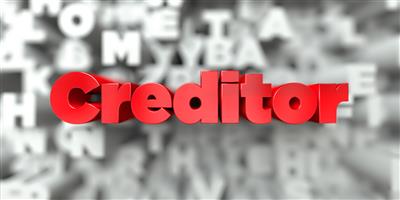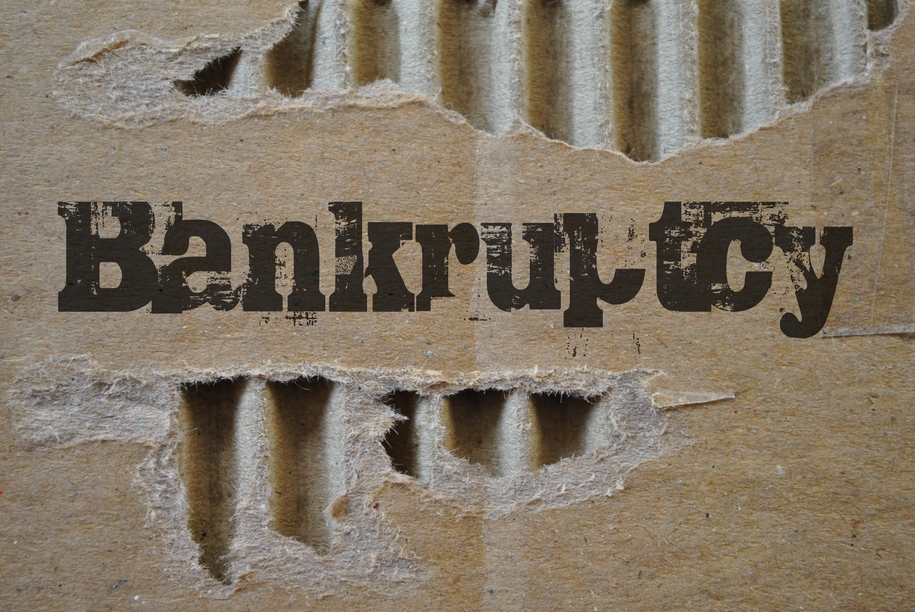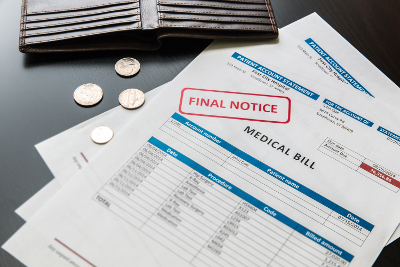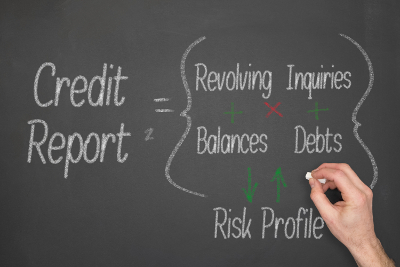Creditor Rights During a Bankruptcy Proceeding
Introduction to Creditor Rights During a Bankruptcy Proceeding
 The ability to file for bankruptcy in the United States is a protected constitutional right. The creditor rights during filing for bankruptcy is protected under Article 1, Section 8, Clause 4 of the United States Constitution.i Bankruptcy laws are governed under federal law, but every state has statutes to accompany those laws.ii As a general matter, bankruptcy is the ability for a debtor to have a fresh start when it comes to financial strain. Many of the procedures and statutes put into place protect the debtor during a bankruptcy proceeding – but what about the creditor rights on the other side? Often times people forget that the creditors to a bankruptcy proceeding have a lot at stake as well. If the bankruptcy judge discharges the debtor’s debts, the creditor will be unable to recover any of the funds that they had extended to the debtor. That is an inevitable possibility for many proceedings, but there are still other protections available to creditors during the bankruptcy proceeding.
The ability to file for bankruptcy in the United States is a protected constitutional right. The creditor rights during filing for bankruptcy is protected under Article 1, Section 8, Clause 4 of the United States Constitution.i Bankruptcy laws are governed under federal law, but every state has statutes to accompany those laws.ii As a general matter, bankruptcy is the ability for a debtor to have a fresh start when it comes to financial strain. Many of the procedures and statutes put into place protect the debtor during a bankruptcy proceeding – but what about the creditor rights on the other side? Often times people forget that the creditors to a bankruptcy proceeding have a lot at stake as well. If the bankruptcy judge discharges the debtor’s debts, the creditor will be unable to recover any of the funds that they had extended to the debtor. That is an inevitable possibility for many proceedings, but there are still other protections available to creditors during the bankruptcy proceeding.
Creditors – Who are they? Secured Creditors vs. Unsecured Creditors
There are different types of creditors, including secured creditors and unsecured creditors. The difference between these classifications has a huge impact on the rights of those creditors, especially during the bankruptcy proceeding.
So first of all, what is a creditor? A creditor is a person or business that has extended funds, delivered a product, service, a loan, or is just owed money by one or more debtors.iii The classification of secured creditor versus an unsecured creditor comes down to how the creditor extended the funds or products. A secured creditor takes collateral for the extension of credit to the debtor.iv For example, when a mortgage lender provides a mortgage to a homebuyer, the mortgage lender will take a lien on the property.v This provides protector to the mortgage lender in the event that homebuyer does not make their monthly payments.vi If that does happen, the mortgage lender would have the option of going after the collateral that secured the mortgage loan – the home.vii Another important note about secured creditors is that they will take priority over unsecured creditors when it comes to getting paid. For example, if the debtor owes a secured creditor $500 and an unsecured $400, but the debtor only has $500 – the secured creditor will receive all of those funds over the unsecured creditor. It pays to be secured.
When it comes to unsecured creditors, there is a lot less protection. An unsecured creditor extends funds, delivers a product, service, a loan, or is owed money by one or multiple debtors, just like a secured creditor. The difference is that an unsecured creditor does not have any collateral to protect them.viii If a mortgage lender was to lend out funds for a homebuyer and the homebuyer fails to pay back those funds – the unsecured creditor would not be able to foreclose on the home like a secured creditor would be able to.ix Considering how large a loan for a mortgage is, a mortgage lender is unlikely to ever extend that credit without securing the debt.
Creditors During the Bankruptcy Proceeding
When a debtor goes through a bankruptcy proceeding, the creditor rights are not as strong as those of the debtors. During a Chapter 7 bankruptcy proceeding, the debtor must have their bankruptcy trustee sell off all non-exempt property that the trustee believes will bring in sufficient funds.x Generally this means that the bankruptcy trustee is more likely to sell off an expensive bedframe that could bring in $1000 over a folding chair that would bring in $5. The point of selling off assets of the debtors is to try to pay back as much of the debtor’s debts as possible.xi Chapter 7 bankruptcy is the clean slate bankruptcy.xii This type of bankruptcy has that name because after the bankruptcy proceeding is complete, the bankruptcy judge will discharge any remaining debts.xiii This is great news for the debtor, but awful news for any creditors who still are owed money. The bankruptcy court, regardless of whether the creditor who is owed that debt is a secured creditor or an unsecured creditor, will discharge the eligible debts. Even though there is no way to challenge the eligible debts that are discharged, the bankruptcy court has created some ways to make sure that the debts to be discharged are done so through proper means. The first of these ways is the creditors meeting.
The Creditor’s Meeting during the Bankruptcy Proceeding
One way the bankruptcy court provides protection for creditor rights during the bankruptcy proceeding is through the creditor’s meeting. This is referred to as the 341 meeting.xiv The 341 meeting will be set for at least 21 days, but no more than 40 days, after the debtor files their bankruptcy case.xv The meeting will take place at the bankruptcy court but will be conducted by the debtor’s bankruptcy trustee.xvi The 341 meeting is not just for creditors; it is also a way for the bankruptcy trustee to examine the overall case as well.xvii This includes the review of the debtor’s finances as described on the bankruptcy petition, the debts of the debtor, and a recent history of financial transactions.xviii
At the 341 meeting the debtor’s creditors are permitted to attend and ask questions while the debtor is under oath.xix The primary reason that creditors will attend this meeting is if the debt the debtor owes them is for a car or home.xx The debtor is not going to be able to have their car loan or mortgage discharged through bankruptcy, so the creditor will need to know what the next step of that particular debt.xxi
Another reason a creditor may attend the 341 meeting is to ensure that any recent transactions were all done properly.xxii If the debtor has participated in a recent transaction that was done so either to evade a creditor, or benefit one creditor over another – like an unsecured creditor over a secured creditor, this will be considered a fraudulent conveyance.xxiii There are two types of fraud that the debtor can commit when it comes to bankruptcy proceedings.xxiv The first is actual fraud, which is committed within one year before filing for bankruptcy petition, and is made with the intent to hinder or defraud a creditor.xxv Actual fraud is harder to prove, since actual intent has to be shown on the part of the debtor. The use of the 341 meeting is one way to start the processing of proving that though.
The other type of fraud is constructive fraud.xxvi This type of fraud requires a transfer from the debtor, to another, without adequate consideration.xxvii What this means is, for example, the debtor sells his car (which he has a personal loan for) for $100 when it is worth $10,000.xxviii The constructive fraud also requires that around the time the conveyance takes place, the debtor is unable to pay their other debts.xxix The use of the 341 meeting is a way to uncover these types of fraudulent conveyances and if necessary, the bankruptcy trustee can actually reverse the transaction, or hold the debtor accountable for the value lost.xxx
Reaffirmation and Settlements of Debts
Now, if the debtor has not committed any fraud and it looks like the debts will be discharged through the Chapter 7 bankruptcy – the creditor can try to work with the debtor to either reaffirm or settle the debt. Reaffirmation of a debt is an agreement between the debtor and the creditor that after the bankruptcy proceeding is concluded and other debts are discharged – the debt between those two parties will remain.xxxi A reaffirmation of a debt is a great benefit for both the creditor and the debtor. The creditor rights ensure that their funds are paid back to them, and the debtor will be able to keep the property at hand – usually a car or home.
Another way the creditor can ensure that they receive something during the bankruptcy proceeding is to just settle with the debtor. If the creditor at hand does not receive any funds after the bankruptcy trustee has already gone through selling off nonexempt assets, it is likely that the creditor will not receive anything. After that point, the creditor should attempt to work out some sort of settlement with the debtor, otherwise the debt will be discharged and the creditor will just be out of luck unfortunately.
Conclusion to Creditor Rights During a Bankruptcy Proceeding
Even though the bankruptcy laws are primarily for debtors in the United States, the creditors to those debtor’s have some built in protections during the proceeding as well. The protections afforded to creditors will depend on whether the creditor was a secured creditor or an unsecured creditor. Next, the bankruptcy trustee will need to ensure that no fraud has taken place within a year of filing for bankruptcy, on part of the debtor. Finally, the creditor can attempt to work with the debtor directly by trying to reaffirm the debtor or even settle the debt. If the creditor is able to reaffirm the debt, this will ensure that the creditor will either be paid in full, or that the creditor will be able to go after the debtor for the debt…even after the bankruptcy. If the creditor settles the debt, it is at least better than not receiving anything. Many people forget about creditor rights when it comes to the bankruptcy proceeding, but their rights during the proceeding are just as important as the debtors. The creditors extend funds to the debtors, and if they are not paid back – they will lose out financially, which could lead to the creditor not wanting to extend credit in the future.
i See Article I Constitution Cornell University Law School (Accessed June 9, 2016) https://www.law.cornell.edu/constitution/articlei
ii See Bankruptcy The Free Dictionary (Accessed June 9, 2016) http://legal-dictionary.thefreedictionary.com/Federal+versus+State+Bankruptcy+Laws
iii See Creditor – What is a Creditor? Debitoor (Accessed June 9, 2016) https://debitoor.com/dictionary/creditor
iv See Secured Creditor Investopedia (Accessed June 9, 2016) http://www.investopedia.com/terms/s/secured-creditor.asp
v Id.
vi Id.
vii Id.
viii See Unsecured Creditor Investopedia (Accessed June 9, 2016) http://www.investopedia.com/terms/u/unsecuredcreditor.asp?o=40186&l=dir&qsrc=999&qo=investopediaSiteSearch
ix Id.
x See A Chapter 7 Bankruptcy Overview NOLO Legal Encyclopedia (Accessed June 9, 2016) http://www.nolo.com/legal-encyclopedia/chapter-7-bankruptcy-overview-29571.html
xi Id.
xii Id.
xiii Id.
xiv See The Meeting of Creditors in Chapter 7 Bankruptcy NOLO Legal Encyclopedia (Accessed June 6, 2016) http://www.nolo.com/legal-encyclopedia/meeting-creditors-chapter-7-bankruptcy.html
xv Id.
xvi Id.
xvii Id.
xviii Id.
xix Id.
xx Id.
xxi Id.
xxii Id.
xxiii See Bankruptcy Law: Understanding Fraudulent Conveyances Cadden & Fuller LLP Attorneys at Law (Accessed June 6, 2016) http://www.caddenfuller.com/Articles/Bankruptcy-Law-Understanding-Fraudulent-Conveyances.shtml
xxiv Id.
xxv Id.
xxvi Id.
xxvii Id.
xxviii Id.
xxix Id.
xxx Id.
xxxi See Reaffirming Secured Debt in Chapter 7 Bankruptcy NOLO Legal Encyclopedia (Accessed June 6, 2016) https://www.nolo.com/legal-encyclopedia/reaffirming-secured-debt-chapter-7-bankruptcy.html




